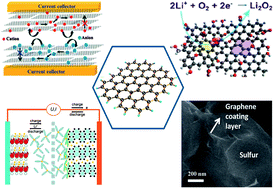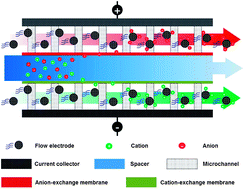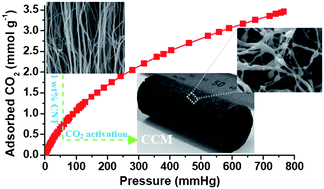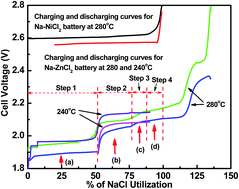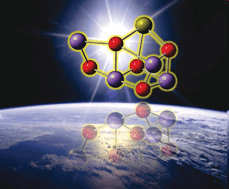We would like to share with you a selection of high impact articles, published in Energy & Environmental Science covering the diverse applications of polymers in the broad fields of energy and environmental science.
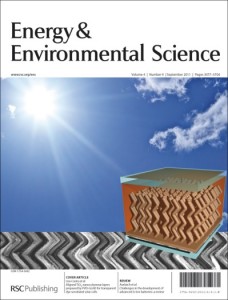
On behalf of Editor-in-Chief Nate Lewis (Caltech) and Board members Peng Wang (Changchun Institute of Applied Chemistry) and Markus Antonietti (Max Planck Institute of Colloids and Interfaces) we invite you to submit your best research to Energy & Environmental Science.
With an Impact Factor of 9.61 and ranked #1 in its field, Energy & Environmental Science is the ideal place to publish your research.
Read this high-impact polymer research today:
Reviews and Analysis
Strong acceptors in donor–acceptor polymers for high performance thin film transistors
Jonathan D. Yuen and Fred Wudl
DOI: 10.1039/C2EE23505F
Conjugated porous polymers for energy applications
Filipe Vilela, Kai Zhang and Markus Antonietti
DOI: 10.1039/C2EE22002D
Prospects for polymer-based thermoelectrics: state of the art and theoretical analysis
Theodore O. Poehler and Howard E. Katz
DOI: 10.1039/C2EE22124A
Morphology characterization in organic and hybrid solar cells
Wei Chen, Maxim P. Nikiforov and Seth B. Darling
DOI: 10.1039/C2EE22056C
Poly(3-hexylthiophene): synthetic methodologies and properties in bulk heterojunction solar cells
Assunta Marrocchi, Daniela Lanari, Antonio Facchetti and Luigi Vaccaro
DOI: 10.1039/C2EE22129B
Overcoming efficiency challenges in organic solar cells: rational development of conjugated polymers
Hae Jung Son, Bridget Carsten, In Hwan Jung and Luping Yu
DOI: 10.1039/C2EE21608F
Advances in high permeability polymeric membrane materials for CO2 separations
Naiying Du, Ho Bum Park, Mauro M. Dal-Cin and Michael D. Guiver
DOI: 10.1039/C1EE02668B
Manufacture, integration and demonstration of polymer solar cells in a lamp for the “Lighting Africa” initiative
Frederik C. Krebs, Torben D. Nielsen, Jan Fyenbo, Mads Wadstrøm and Marie S. Pedersen
DOI: 10.1039/B918441D
Magnesium nanocrystal-polymer composites: A new platform for designer hydrogen storage materials
Rizia Bardhan, Anne M. Ruminski, Alyssa Brand and Jeffrey J. Urban
DOI: 10.1039/C1EE02258J
Recent advances in non-precious metal catalysis for oxygen-reduction reaction in polymer electrolyte fuel cells
Frédéric Jaouen, Eric Proietti, Michel Lefèvre, Régis Chenitz, Jean-Pol Dodelet, Gang Wu, Hoon Taek Chung, Christina Marie Johnston and Piotr Zelenay
DOI: 10.1039/C0EE00011F
Hydrocarbon proton conducting polymers for fuel cell catalyst layers
Jennifer Peron, Zhiqing Shi and Steven Holdcroft
DOI: 10.1039/C0EE00638F
Organic photovoltaics
Bernard Kippelen and Jean-Luc Brédas
DOI: 10.1039/B812502N
Tandem polymer photovoltaic cells—current status, challenges and future outlook
Srinivas Sista, Ziruo Hong, Li-Min Chen and Yang Yang
DOI: 10.1039/C0EE00754D
Life-cycle analysis of product integrated polymer solar cells
Nieves Espinosa, Rafael García-Valverde and Frederik C. Krebs
DOI: 10.1039/C1EE01127H
Original Research
Reversible CO2 capture with porous polymers using the humidity swing
Hongkun He, Wenwen Li, Mingjiang Zhong, Dominik Konkolewicz, Dingcai Wu, Karin Yaccato, Tim Rappold, Glenn Sugar, Nathaniel E. David and Krzysztof Matyjaszewski
DOI: 10.1039/C2EE24139K
Disentangling the impact of side chains and fluorine substituents of conjugated donor polymers on the performance of photovoltaic blends
Liqiang Yang, John R. Tumbleston, Huaxing Zhou, Harald Ade and Wei You
DOI: 10.1039/C2EE23235A
Integrated energy storage and electrochromic function in one flexible device: an energy storage smart window
Kai Wang, Haiping Wu, Yuena Meng, Yajie Zhang and Zhixiang Wei
DOI: 10.1039/C2EE21643D
Electrospun and solution blown three-dimensional carbon fiber nonwovens for application as electrodes in microbial fuel cells
Shuiliang Chen, Haoqing Hou, Falk Harnisch, Sunil A. Patil, Alessandro A. Carmona-Martinez, Seema Agarwal, Yiyun Zhang, Suman Sinha-Ray, Alexander L. Yarin, Andreas Greiner and Uwe Schröder
DOI: 10.1039/C0EE00446D
Seamless polymer solar cell module architecture built upon self-aligned alternating interfacial layers
Jongjin Lee, Hyungcheol Back, Jaemin Kong, Hongkyu Kang, Suhee Song, Hongsuk Suh, Sung-Oong Kang and Kwanghee Lee
DOI: 10.1039/C3EE24454G
Microporous organic polymers for carbon dioxide capture
Robert Dawson, Ev Stöckel, James R. Holst, Dave J. Adams and Andrew I. Cooper
DOI: 10.1039/C1EE01971F
High mobility organic thin film transistor and efficient photovoltaic devices using versatile donor–acceptor polymer semiconductor by molecular design
Prashant Sonar, Samarendra P. Singh, Yuning Li, Zi-En Ooi, Tae-jun Ha, Ivy Wong, Mui Siang Soh and Ananth Dodabalapur
DOI: 10.1039/C1EE01213D
Highly durable and flexible dye-sensitized solar cells fabricated on plastic substrates: PVDF-nanofiber-reinforced TiO2 photoelectrodes
Yuelong Li, Doh-Kwon Lee, Jin Young Kim, BongSoo Kim, Nam-Gyu Park, Kyungkon Kim, Joong-Ho Shin, In-Suk Choi and Min Jae Ko
DOI: 10.1039/C2EE21674D
Inverted polymer solar cells with 8.4% efficiency by conjugated polyelectrolyte
Tingbin Yang, Ming Wang, Chunhui Duan, Xiaowen Hu, Lin Huang, Junbiao Peng, Fei Huang and Xiong Gong
DOI: 10.1039/C2EE22296E
First implementation of alkaline polymer electrolyte water electrolysis working only with pure water
Li Xiao, Shuai Zhang, Jing Pan, Cuixia Yang, Minglong He, Lin Zhuang and Juntao Lu
DOI: 10.1039/C2EE22146B
Improving the cycling stability of silicon nanowire anodes with conducting polymer coatings
Yan Yao, Nian Liu, Matthew T. McDowell, Mauro Pasta and Yi Cui
DOI: 10.1039/C2EE21437G
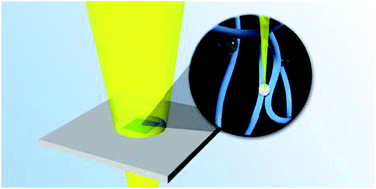











 They were able to demonstrate conclusively that Mn3+, not Mn4+ or Mn2+, is the active species for ORR. They also revealed that the substrate can greatly alter the ORR activities of oxide films of a few nanometers in thickness by interfacial charge transfer.
They were able to demonstrate conclusively that Mn3+, not Mn4+ or Mn2+, is the active species for ORR. They also revealed that the substrate can greatly alter the ORR activities of oxide films of a few nanometers in thickness by interfacial charge transfer.